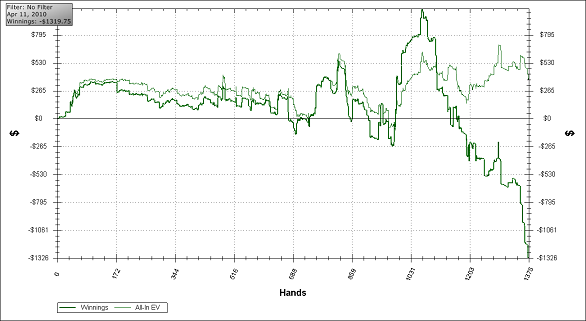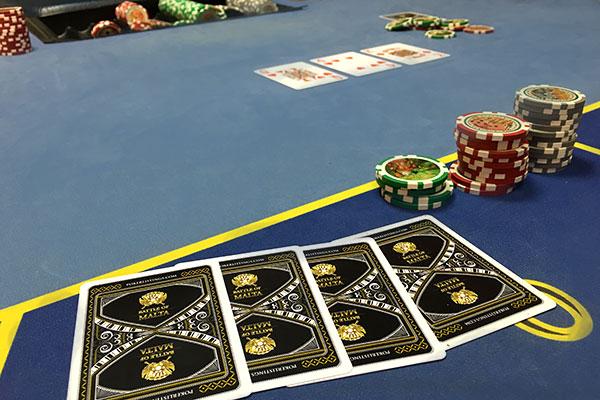Best Plo Starting Hands
You will see that for the top 90% of starting hands in 5 Card PLO the equity against the strongest starting hands does not dip below 38%. You can also recognize that the equity vs 10%VR at the 85% point for 5 card PLO is higher than the equity at the 35% point for 4 Card PLO. The difference between Pot Limit Omaha (PLO) and No Limit Hold'Em (NLH) is still massively underestimated. When starting out in PLO, it's imperative that you adjust your starting hands from NLHE. In Hold 'Em, a hand like q q is considered extremely strong, however, in PLO, a hand like q q 8 3 is a very weak hand and should almost never be played.
- Omaha Strategy Starting Hands
- Best Hands In Omaha Poker
- Good Plo Starting Hands
- Best Plo Starting Hands Meme
In part #1 of this article series we looked at how the ‘combinations’ in Pot Limit Omaha Starting hands were a critical factor. Here we will expand our discussion with a look at the various types of starting hands you should play – looking at their pre-flop strength and noting some basic guidelines for post flop play.

There is some debate among expert PLO players as to which is the best starting hand of all. Some argue this is A-A-K-K double suited, while others prefer A-A-J-10 double suited (the double suited refers to having only 2 suits, with these hands these would necessarily be to the ace – giving the hands ‘nut flush’ potential).
In terms of combinations the A-A-J-10 does better, having all 6 of the 2 card hands working for it in addition to the flush possibilities. The A-A-K-K hand has the ability to make top set (and thus full house potential) in 2 ways rather than one, and also has the flush potential. The best way to look at this debate is to be happy that you are dealt either hand – and also to remember that when facing a bet on a low-card flop that is not your suit, you may need to discard them post-flop when things get heavy!
Hands Containing 1 Pair
A-A-x-x hands are strong in PLO, however the extra help given by the additional cards (along with your table position) is a critical factor in how aggressively you can play them. If the side cards offer no help, and your stack is ‘deep’ they can in fact be trouble hands. That is to say that unless you can get a good proportion of your stack into the pot pre-flop is can be better not to re-raise if you would not ordinarily raise a wide variety of hands in a simiar situation. Since aces unimproved will rarely win a showdown in Omaha you need to have some backup. Even a small amount of help from side-cards for example A-A-J-3 with 1 suited ace is stronger – now you have a small amount of nut flush and nut straight potential to go with your high pair, of course 4-cards working together which include ace-ace is idea.
K-K-x-x and Q-Q-x-x hands follow the same guidelines, these hands need backup from the side cards to a greater extent – as you will not always be making top set those times you do hit the flop. You may also be drawing to the non-nut flush when these hands are suited with their side cards. Kings and queens are strong hands in Omaha, however caution is advised when otherwise tight players want to build a big pot after the flop. When these hands contain a single ace it is less likely an opponent holds ace-ace in their hand (there are less aces left in the deck!), adding to the playability of these potentially dangerous hands.
All other paired hands without backup must be played cautiously. Top set is a great hand to flop in Pot Limit Omaha, however any draw combination may leave you vulnerable to both the flush or straight and the fact that any over-card may give an opponent a higher set. Think of it this way. You have 10-10-7-2 and see a flop of 5-6-10 with 2 opponents. You could easily be facing a combination of 7-8-Q-Q and 3-4-A-A here – that is a lot of cards that destroy your set, with deep stacks this is a potential trouble hand.
Connected Cards
Hands which contain 4 connected cards are very strong in Pot Limit Omaha, due to the large number of combinations working for you. If these are high and double-suited then this makes them even stronger.
Double-suited broadway hands such as 10-J-Q-K, J-Q-K-A and 9-10-Q-J are monsters and only a very slight under-dog to A-A-x-x hands before the flop. These should be played strongly before the flop, especially from position. The strength in these hands is the variety of straights and flushes they can make. With a flop containing 2 of your suit and straight working both ways you could have 17 or more outs to a nut hand – making you a solid favorite over flopped trips.
Smaller connected cards and those with no suits can also be considered strong – and double suited ‘rundowns’ are premium. If you suspect an opponent is raising with a high pair then a hand such as 6-7-8-9 makes an excellent calling candidate, especially since the kind of flop that will hit these hands hard will not look ‘threatening’ to most opponents.
With gaps in your connected combinations these hands begin to lose some value, though can often be used to call. Be cautious when the gap is large or at the top end of your hand. For example 5-6-9-10 is really just 2 connectors and 6-7-8-J has the downside that many of the straights you hit will not be the top straight – and in PLO that is very dangerous indeed!
Omaha Strategy Starting Hands
Mixed Draw Combinations
From position or when closing the betting there are many other playable combinations. For example a hand such as 10-10-J-9, especially double suited can hit a flop in a variety of ways. This type of hand will need to hit the flop well in order to continue. A-5-6-7 is another example that becomes playable when the betting is light pre-flop, assuming that the ace is suited with another card. New players should probably avoid the weaker end of these hands until they have gained experience in post-flop play in PLO.
Two Pair Hands
The good news with 2 pair hands is that you will make a set a little over one in 4.5 times when holding 2 pairs before the flop. The problem is that, unless your pairs are high and the flop contains no draws, you would actually make a very expensive second best hand. High-cards (and preferably double suited cards too) are critical when playing 2-pair hands, making middle or bottom set can be dangerous in PLO as often as it is profitable.
Best Hands In Omaha Poker
Future articles here at Omaha Planet will put various starting hands under the spotlight, looking at how they play on different flops and against different types of opponent. In the meantime why not check out our article on Beginners PLO Pre-Flop Strategy.
This Recommended Omaha Software Tool Can Transform Your Profits!
Leading Omaha software tool ‘Omaha Indicator’ flags starting hands as ‘Top 10’, ‘Premium’ and so on – as well as providing real time odds and outs information and profiles / statistics on your opponents… just imagine what this powerful tool – which is approved by major poker sites – can do for your profit margins!! Read our Omaha Indicator Review for more information or even better – check out Omaha Indicator for yourself now!
PLO Starting Hands Chart

Here is a basic and conservative pot limit omaha hand chart for being the first to open (everyone folds to you) in various positions.
Note that “BBB” or “NNN” assumes the random cards are different (unpaired).
Key:
B: Broadway card (A, K, Q, J, T) ss: Single suited
N: Non-low card (K, Q, J, T, 9) ds: Double suited

x: Any card as: Ace suited
r: Rainbow ks: King suited
UTG:
BBBB, NNNNss, ANNNas, AKNNds, AKQxds, AAxx, AKKxss, KK65ss +, KKBBr +, AQQxas +, QQxxds, 9988 +, TT98ss +, T988ss +, JTT9ss +, JJT8ds +, QQ98ss +, QQT8ss +, QJT9r +, A987as +, 9876ss +, T976ss +, T986ss +, QT98ds
Good Plo Starting Hands
MP:
All of the above plus KK54ss +, QQBBss, QT98ss, QT98ss, J987ds, A876as, 9875ss, 9865ss, JJ98ds, 9987ss, 9877ss, T998ss
Also play any BBBBds hand (paired or not)

Best Plo Starting Hands Meme
CO:
All of the above and add BBBxds, KKxx, QQ76ss +, A88xas +, 5566 +, 4567ss +, 5567ss +, 7765ss +, 8776ss +, A456as +, K765ks +, 9765ss +, 8654ds +, 9976ss +,TT86ss +, 9986ss + JT9xss +, T98xds +, QJ9xds +, QT9xds +
Also play any BBBBss hand (paired or not)
BTN:
All of the above and add BBBxss, QQxx, A66xas +, A234as +, 2345ss +, 4455 +, 3567ss +, 4456ss +, 6654ss +, 7643ss +, K654ks +, 7754ss+, 8864ss +, J98xds +, 876xss+, 456xds +
SB:
Start out same UTG, you then add hands slowly going up the positions in the chart depending on how much the BB reacts (if he 3bets light, uses positional advantage postflop, etc.). Note that you should be doing the same thing for the other position depending on what you know of the people left to act behind you (especially the BTN and CO).